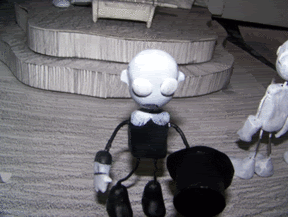In Bishop's Antagonism and Relational Aesthetics, written in 2004, Bishop analyzes Nicolas Bourriaud's theories on the art of the 1990s. Bourriaud claims that the art of the decade is 'relational art', and describes the the goal of this work to bank on human interaction in social context rather than creating an independent space detached from such a thing. Instead of utopian art, this art takes the form of 'microtopias' of the now; instead of dreaming of a better tomorrow, it focuses on making more of today. Tiravanija and Gillick are sited, both creating environments that are boasted as ideal examples of Bourriaud's claim. However, Bishop casts her questions on the structure of this sort of work. The people are interchangeable and the intentions are not clearly defined, as whatever is added to the space before the people are introduced have little importance to the overall structure of the work. It's not always clear as to who the piece is made for or what its aims may be.
She then brings up artists Sierra and Hirshhorn, who don't support Bourriaud's more ideal vision of relational art. While Bishop doesn't downright disagree with the rise of relational art, she argues that the ideal is not the only form it takes.
Could that microtopia be a distopian environment? Does it have to be a comfortable place? One piece that Bishop describes left participants feeling like intruders, which could be close, but it only seemed to me that it was no different from any other reaction-invoking piece. Is distopia too extreme to be considered a relational setting?
At the start of the article, Bishop describes a renovated old pavilion that was left rather bare and un-manicured within. It was against the modern/traditional 'white walls and clean spaces' setting often compared to a laboratory. I found this bit rather interesting, having seen one too many 'white cubes' in the past three years. But is it really a better solution? Just how much does an artist need to be in control of their piece, anyhow? Not only does the content of the piece itself matter, but where it is, the lighting, the interactions, and every little detail you can't quite think of seems to come back and bite you in the ass if you don't catch it. White walls or not, what does it matter? If the gallery setting isn't the place for something to be, then put it somewhere else. If it needs to be in a gallery, then do what you have to to make the work fit.
How does this relate to my work? I'm not entirely sure. To my current work, it hardly relates; I'm a couple of decades behind 'relational art'. My respective 'universe' takes place in its own little space and the people are merely observers. Just as any work, reactions are expected, but I don't make it clear what reaction I'd like to get. I know that I don't have total control of that. I know that not all the stars will be aligned even when I thought I thought every detail out. It would take a month of planning a single piece to cover as many bases as I could. Instead, I'm willing to settle for working my space into the existing one so you might just forget all about the fly on the wall or the guy standing next to you and pay attention.
Monday, October 4, 2010
Subscribe to:
Post Comments (Atom)

No comments:
Post a Comment